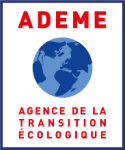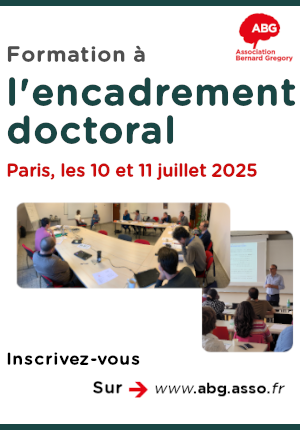Déterminants environnementaux et biotiques des défoliations des chênaies dépérissantes françaises // Environmental and biotic determinants of defoliation in declining French oak forests
|
ABG-132373
ADUM-66440 |
Sujet de Thèse | |
| 05/06/2025 |
Université d'Orléans
Nogent-Sur-Vernisson - Centre Val de Loire - France
Déterminants environnementaux et biotiques des défoliations des chênaies dépérissantes françaises // Environmental and biotic determinants of defoliation in declining French oak forests
- Biologie
défoliation des arbres, papillons de nuit, écologie du paysage, télédétection, écologie des communautés
tree defoliation, moths, landscape ecology, remote sensing, community ecology
tree defoliation, moths, landscape ecology, remote sensing, community ecology
Description du sujet
Les forêts métropolitaines connaissent depuis plusieurs années une dégradation de leur état sanitaire, une baisse de leur productivité et une augmentation sensible de la mortalité des arbres. Le manque d'eau et les très fortes températures en été sont généralement citées comme les principaux déclencheurs du dépérissement forestier. Chez les chênes, ce dépérissement s'étale souvent sur plusieurs dizaines d'années, en fonction de la récurrence et de l'intensité des événements climatiques délétères.
Cette thèse propose ainsi d'identifier et de quantifier l'importance relative des facteurs locaux (structure, composition et état du peuplement, sol), climatiques et paysagers (composition et la configuration paysagère) déterminant l'intensité des défoliations et leur dynamique dans le temps et l'espace. Il s'agit également de mettre en relation défoliation et dépérissement de façon à comprendre comment ils se nourrissent mutuellement (des arbres affaiblis sont plus susceptibles d'être attaqués et ces attaques renforcent le dépérissement des arbres).
D'un point de vue socio-économique, l'amélioration des connaissances sur les défoliations permettra aux gestionnaires forestiers d'identifier des situations à risque et d'intervenir précocement et de faire des préconisations d'actions sur le contexte paysager sur ces essences d'intérêt économique majeur en France.
L'originalité de ce projet mêlant écologie fonctionnelle, des communautés et du paysage réside dans :
- l'étude à l'échelle nationale des déterminants, de l'arbre au paysage, des défoliations des chênes en exploitant des suivis menés depuis plusieurs décennies par le département santé des forêts,
- la mise en relation entre défoliation et dépérissement,
- le développement d'une méthode pour cartographier le niveau annuel des défoliations des chênaies par télédétection.
- de manière alternative au volet précédent de télédétection des défoliations : une approche pluritaxonomique à l'échelle des communautés permettant de développer des travaux d'écologie fonctionnelle en associant arbres, lépidoptères, passereaux forestiers et chauves-souris par l'utilisation novatrice de pièges lumineux non destructifs (avec identification par IA) et d'enregistreurs sonores passifs.
Vous serez accueilli.e au sein de l'Unité de Recherche Ecosystèmes Forestiers (EFNO) du centre INRAE Centre Val de Loire, à Nogent-sur-Vernisson (45), composée de 34 chercheurs, ingénieurs et techniciens. La thèse se fera en co-encadrement avec le laboratoire de Physiologie, Ecologie et Environnement (P2E) de l'université d'Orléans.
Plus d'infos: https://jobs.inrae.fr/ot-25940
Date de fin de réception des candidatures: 4 juillet 2025
------------------------------------------------------------------------------------------------------------------------------------------------------------------------
------------------------------------------------------------------------------------------------------------------------------------------------------------------------
For several years now, forests in mainland France have been experiencing a deterioration in their health, a drop in productivity and a significant increase in tree mortality. Lack of water and very high summer temperatures are generally cited as the main triggers for forest dieback. In oaks, this decline is often spread over several decades, depending on the recurrence and intensity of deleterious climatic events.
The aim of this thesis is to identify and quantify the relative importance of local (stand structure, composition and condition, soil), climatic and landscape factors (landscape composition and configuration) in determining the intensity of defoliation and its dynamics over time and space. The aim is also to establish a link between defoliation and decline in order to understand how they feed off each other (weakened trees are more likely to be attacked, and these attacks reinforce the decline of the trees).
From a socio-economic point of view, improved knowledge of defoliation will enable forest managers to identify high-risk situations and intervene early, and to make recommendations for action in the landscape context for these species of major economic interest in France.
The originality of this project, which combines functional, community and landscape ecology, lies in :
- a nationwide study of the determinants of oak defoliation, from the tree to the landscape, using monitoring carried out over several decades by the Forest Health Department,
- linking defoliation and decline,
- the development of a method for mapping the annual level of defoliation in oak stands using remote sensing.
- as an alternative to the previous component of remote sensing of defoliation: a multi-taxonomic approach at community level, making it possible to develop functional ecology work by associating trees, lepidopterans, forest passerines and bats through the innovative use of non-destructive light traps (with identification by AI) and passive sound recorders.
You will be based in the Forest Ecosystems Research Unit (EFNO) at the INRAE Centre Val de Loire in Nogent-sur-Vernisson (45), which comprises 34 researchers, engineers and technicians. The thesis will be co-supervised with the Physiology, Ecology and Environment Laboratory (P2E) at the University of Orléans.
Further information: https://jobs.inrae.fr/ot-25940
Deadline for receipt of applications: 4 July 2025
------------------------------------------------------------------------------------------------------------------------------------------------------------------------
------------------------------------------------------------------------------------------------------------------------------------------------------------------------
Début de la thèse : 01/10/2025
WEB : https://jobs.inrae.fr/ot-25940
Cette thèse propose ainsi d'identifier et de quantifier l'importance relative des facteurs locaux (structure, composition et état du peuplement, sol), climatiques et paysagers (composition et la configuration paysagère) déterminant l'intensité des défoliations et leur dynamique dans le temps et l'espace. Il s'agit également de mettre en relation défoliation et dépérissement de façon à comprendre comment ils se nourrissent mutuellement (des arbres affaiblis sont plus susceptibles d'être attaqués et ces attaques renforcent le dépérissement des arbres).
D'un point de vue socio-économique, l'amélioration des connaissances sur les défoliations permettra aux gestionnaires forestiers d'identifier des situations à risque et d'intervenir précocement et de faire des préconisations d'actions sur le contexte paysager sur ces essences d'intérêt économique majeur en France.
L'originalité de ce projet mêlant écologie fonctionnelle, des communautés et du paysage réside dans :
- l'étude à l'échelle nationale des déterminants, de l'arbre au paysage, des défoliations des chênes en exploitant des suivis menés depuis plusieurs décennies par le département santé des forêts,
- la mise en relation entre défoliation et dépérissement,
- le développement d'une méthode pour cartographier le niveau annuel des défoliations des chênaies par télédétection.
- de manière alternative au volet précédent de télédétection des défoliations : une approche pluritaxonomique à l'échelle des communautés permettant de développer des travaux d'écologie fonctionnelle en associant arbres, lépidoptères, passereaux forestiers et chauves-souris par l'utilisation novatrice de pièges lumineux non destructifs (avec identification par IA) et d'enregistreurs sonores passifs.
Vous serez accueilli.e au sein de l'Unité de Recherche Ecosystèmes Forestiers (EFNO) du centre INRAE Centre Val de Loire, à Nogent-sur-Vernisson (45), composée de 34 chercheurs, ingénieurs et techniciens. La thèse se fera en co-encadrement avec le laboratoire de Physiologie, Ecologie et Environnement (P2E) de l'université d'Orléans.
Plus d'infos: https://jobs.inrae.fr/ot-25940
Date de fin de réception des candidatures: 4 juillet 2025
------------------------------------------------------------------------------------------------------------------------------------------------------------------------
------------------------------------------------------------------------------------------------------------------------------------------------------------------------
For several years now, forests in mainland France have been experiencing a deterioration in their health, a drop in productivity and a significant increase in tree mortality. Lack of water and very high summer temperatures are generally cited as the main triggers for forest dieback. In oaks, this decline is often spread over several decades, depending on the recurrence and intensity of deleterious climatic events.
The aim of this thesis is to identify and quantify the relative importance of local (stand structure, composition and condition, soil), climatic and landscape factors (landscape composition and configuration) in determining the intensity of defoliation and its dynamics over time and space. The aim is also to establish a link between defoliation and decline in order to understand how they feed off each other (weakened trees are more likely to be attacked, and these attacks reinforce the decline of the trees).
From a socio-economic point of view, improved knowledge of defoliation will enable forest managers to identify high-risk situations and intervene early, and to make recommendations for action in the landscape context for these species of major economic interest in France.
The originality of this project, which combines functional, community and landscape ecology, lies in :
- a nationwide study of the determinants of oak defoliation, from the tree to the landscape, using monitoring carried out over several decades by the Forest Health Department,
- linking defoliation and decline,
- the development of a method for mapping the annual level of defoliation in oak stands using remote sensing.
- as an alternative to the previous component of remote sensing of defoliation: a multi-taxonomic approach at community level, making it possible to develop functional ecology work by associating trees, lepidopterans, forest passerines and bats through the innovative use of non-destructive light traps (with identification by AI) and passive sound recorders.
You will be based in the Forest Ecosystems Research Unit (EFNO) at the INRAE Centre Val de Loire in Nogent-sur-Vernisson (45), which comprises 34 researchers, engineers and technicians. The thesis will be co-supervised with the Physiology, Ecology and Environment Laboratory (P2E) at the University of Orléans.
Further information: https://jobs.inrae.fr/ot-25940
Deadline for receipt of applications: 4 July 2025
------------------------------------------------------------------------------------------------------------------------------------------------------------------------
------------------------------------------------------------------------------------------------------------------------------------------------------------------------
Début de la thèse : 01/10/2025
WEB : https://jobs.inrae.fr/ot-25940
Nature du financement
Précisions sur le financement
Financement d'un établissement public Français
Présentation établissement et labo d'accueil
Université d'Orléans
Etablissement délivrant le doctorat
Université d'Orléans
Ecole doctorale
549 Santé, Sciences Biologiques et Chimie du Vivant - SSBCV
Profil du candidat
Formation recommandée : ingénieur.e forestier.ère ou Master 2 avec enseignements forestiers et/ou écologie des écosystèmes forestiers (Bac+5)
Connaissances souhaitées :
• Écologie forestière
• Sciences de l'environnement (risques naturels, sciences de la terre)
• Mathématiques appliquées, Statistiques pour l'environnement
• Programmation informatique sous R et/ou Python
• Télédétection
Expérience appréciée :
• Stage M2 ou fin d'études en laboratoire de recherche et/ou en lien avec les écosystèmes forestiers
• Utilisation et/ou développement de modèles statistiques
Aptitudes recherchées : Autonomie, sens de l'organisation et rigueur méthodologique sont indispensables, de même qu'un bon niveau d'anglais tant écrit qu'oral.
Recommended training: forestry engineer or Master's 2 with forestry and/or ecology of forest ecosystems (5 years' higher education) Desired knowledge : - Forest ecology - Environmental sciences (natural hazards, earth sciences) - Applied mathematics, statistics for the environment - Computer programming in R and/or Python - Remote sensing Experience appreciated : - M2 or end-of-studies placement in a research laboratory and/or in connection with forest ecosystems - Use and/or development of statistical models Desired skills : Autonomy, organisational skills and methodological rigour are essential, as is a good level of written and spoken English.
Recommended training: forestry engineer or Master's 2 with forestry and/or ecology of forest ecosystems (5 years' higher education) Desired knowledge : - Forest ecology - Environmental sciences (natural hazards, earth sciences) - Applied mathematics, statistics for the environment - Computer programming in R and/or Python - Remote sensing Experience appreciated : - M2 or end-of-studies placement in a research laboratory and/or in connection with forest ecosystems - Use and/or development of statistical models Desired skills : Autonomy, organisational skills and methodological rigour are essential, as is a good level of written and spoken English.
04/07/2025
Postuler
Fermer
Vous avez déjà un compte ?
Nouvel utilisateur ?
Besoin d'informations sur l'ABG ?
Vous souhaitez recevoir nos infolettres ?
Découvrez nos adhérents
 Laboratoire National de Métrologie et d'Essais - LNE
Laboratoire National de Métrologie et d'Essais - LNE  Institut Sup'biotech de Paris
Institut Sup'biotech de Paris  Généthon
Généthon  MabDesign
MabDesign  Aérocentre, Pôle d'excellence régional
Aérocentre, Pôle d'excellence régional  PhDOOC
PhDOOC  CASDEN
CASDEN  Groupe AFNOR - Association française de normalisation
Groupe AFNOR - Association française de normalisation  ANRT
ANRT  SUEZ
SUEZ  CESI
CESI  ADEME
ADEME  ASNR - Autorité de sûreté nucléaire et de radioprotection - Siège
ASNR - Autorité de sûreté nucléaire et de radioprotection - Siège  Tecknowmetrix
Tecknowmetrix  MabDesign
MabDesign  ONERA - The French Aerospace Lab
ONERA - The French Aerospace Lab  Ifremer
Ifremer  Nokia Bell Labs France
Nokia Bell Labs France  TotalEnergies
TotalEnergies







